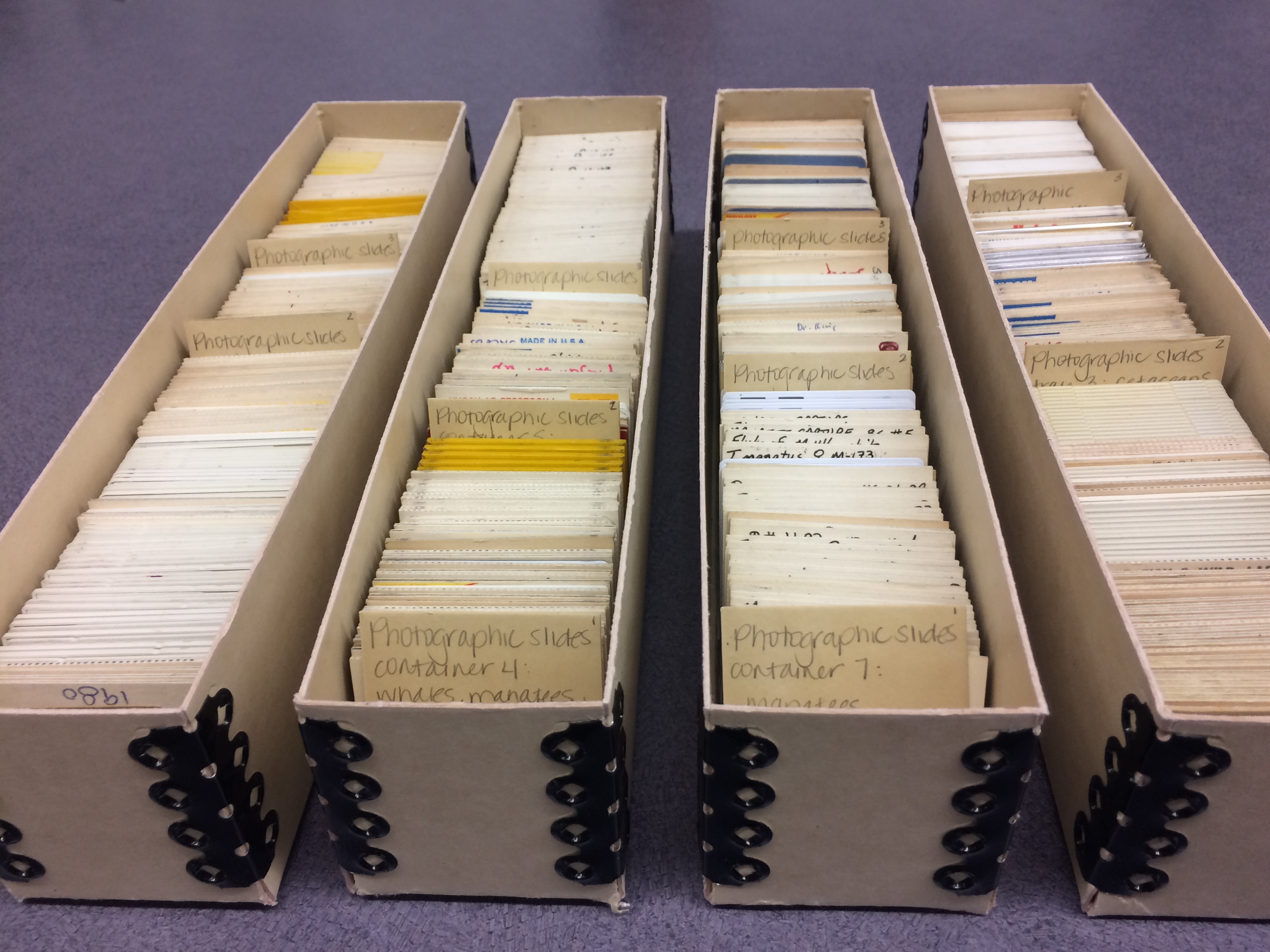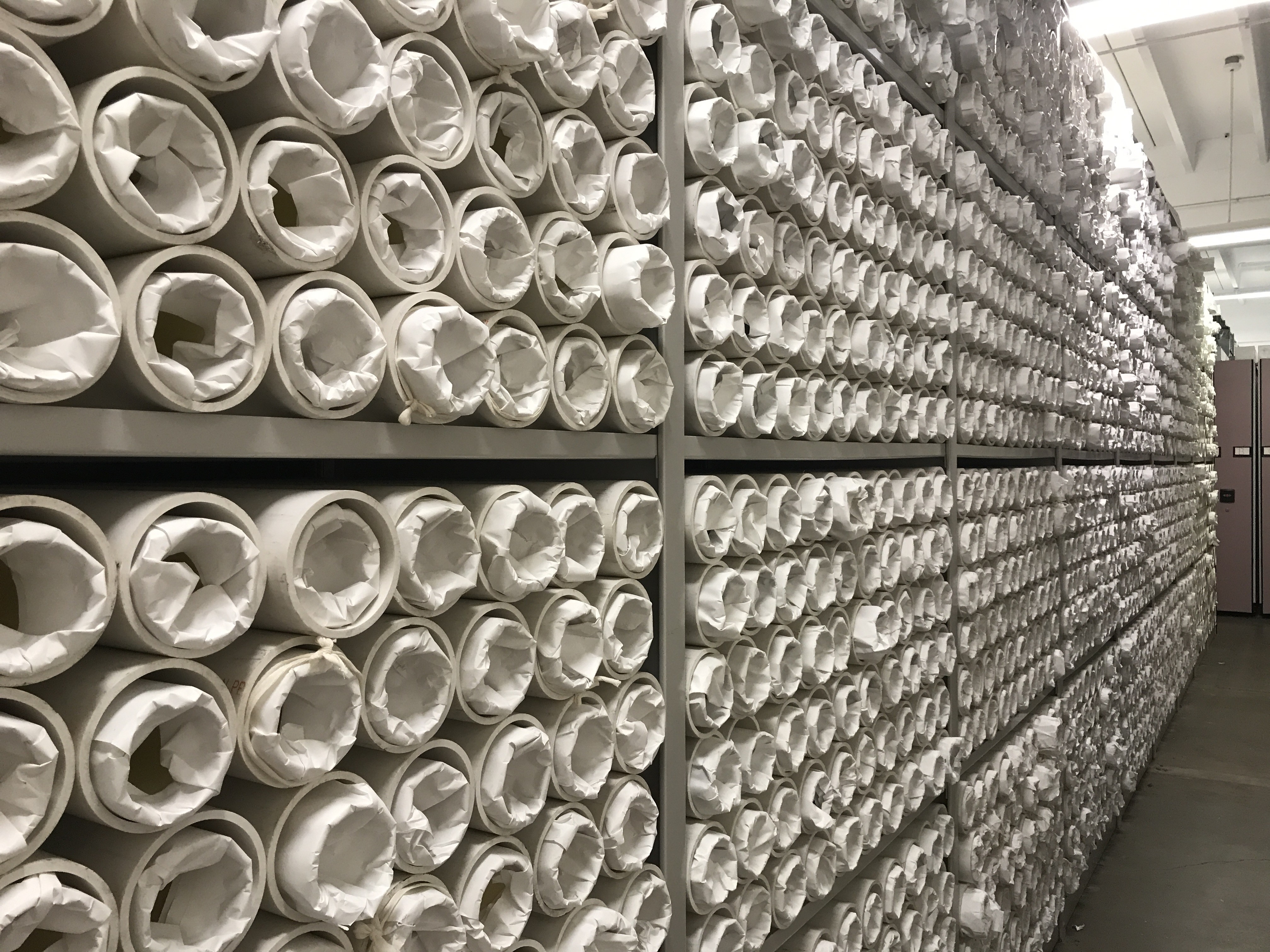Materials being processed (in this case, MC 00220, the Zeno Payne Metcalf Entomology Research Collection)
What Is Archival Processing? Part 1: Rehousing
Back in September, I posted "What Is Archival Processing? An Introduction" to present a series where we'll explore different aspects of processing and how each one helps researchers discover materials. In this post, we'll explore the process of rehousing.
Simply put, rehousing is placing materials of historical importance into containers for long term preservation so that they can be accessed by researchers. This sounds straightforward enough, but when presented with different formats and different levels of organization, things can get complicated.
Frequently (although not always) papers come to us in file folders that were used by the person or office from which they came. In this case, we typically move the papers from folders into new acid-free folders, retaining the information from the original folder. We then place this new folder in an “archival box” - a box which, like the folder, has been tested for PH neutrality. The acid-free boxes and folders will preserve the documents much longer than acidic folders, which cause paper to break down over time. The boxes are stored in our storage facility, which is monitored for consistent temperature and humidity levels.
This act of refoldering can be pretty straightforward in some cases, when folders are well-labeled and can be easily transferred, with titles, to new folders. However collections arrive in varying states of organization and some can be a bit more challenging. We receive materials that were stored in attics, closets, storage units, and in one case, an old chicken house! In the box on the left above, many papers are not even in a folder and there are different formats mixed together including newspaper clippings, photographs and books. In this case, a processor will take the time to separate materials into groups that make sense and give folder titles based on contents. Typically archivists do not read every page or remove every staple or paper clip. This kind of detailed processing, while appealing in some respects, leads to long backlogs of materials that are not described at all while others are given more attention than is really needed for researchers to find them. With this in mind, a processor will make some quick but educated decisions on description and get to work.
Rehousing can also get a bit more complicated when formats other than paper are involved. Photographs may be placed in photosleeves, slides may be placed in slide boxes, and glass slides and photographic negatives may be placed in specially sized acid-free envelopes. We may need to get creative with unusually sized artifacts (usually with help from our Preservation unit), although they are normally placed in artifact boxes with acid free tissue paper. Film reels are ideally placed in polypropylene vented cans. Architectural drawings, of which we have many at the SCRC, are either rolled and wrapped on cores and placed in “beehive” storage or placed in large flatfolders and stored flat in flatfolder drawers. Whatever the case, the goal is to stabilize and preserve the material as best as possible and to accomplish this goal in a reasonable amount of time.


Sometimes finding that happy medium of optimum storage versus time and labor spent can be challenging, but it’s essential to providing the best and fastest access to materials. Many decision points in processing all come back to this tension, and there is rarely only one acceptable solution to questions that come up.
If you have any questions or are interested in viewing Special Collections materials, please contact us at library_specialcollections@ncsu.edu or submit a request online. The Special Collections Research Center is open by appointment only. Appointments are available Monday–Friday, 9am–6pm and Saturday, 1pm–5pm. Requests for a Saturday appointment must be received no later than Tuesday of the same week.